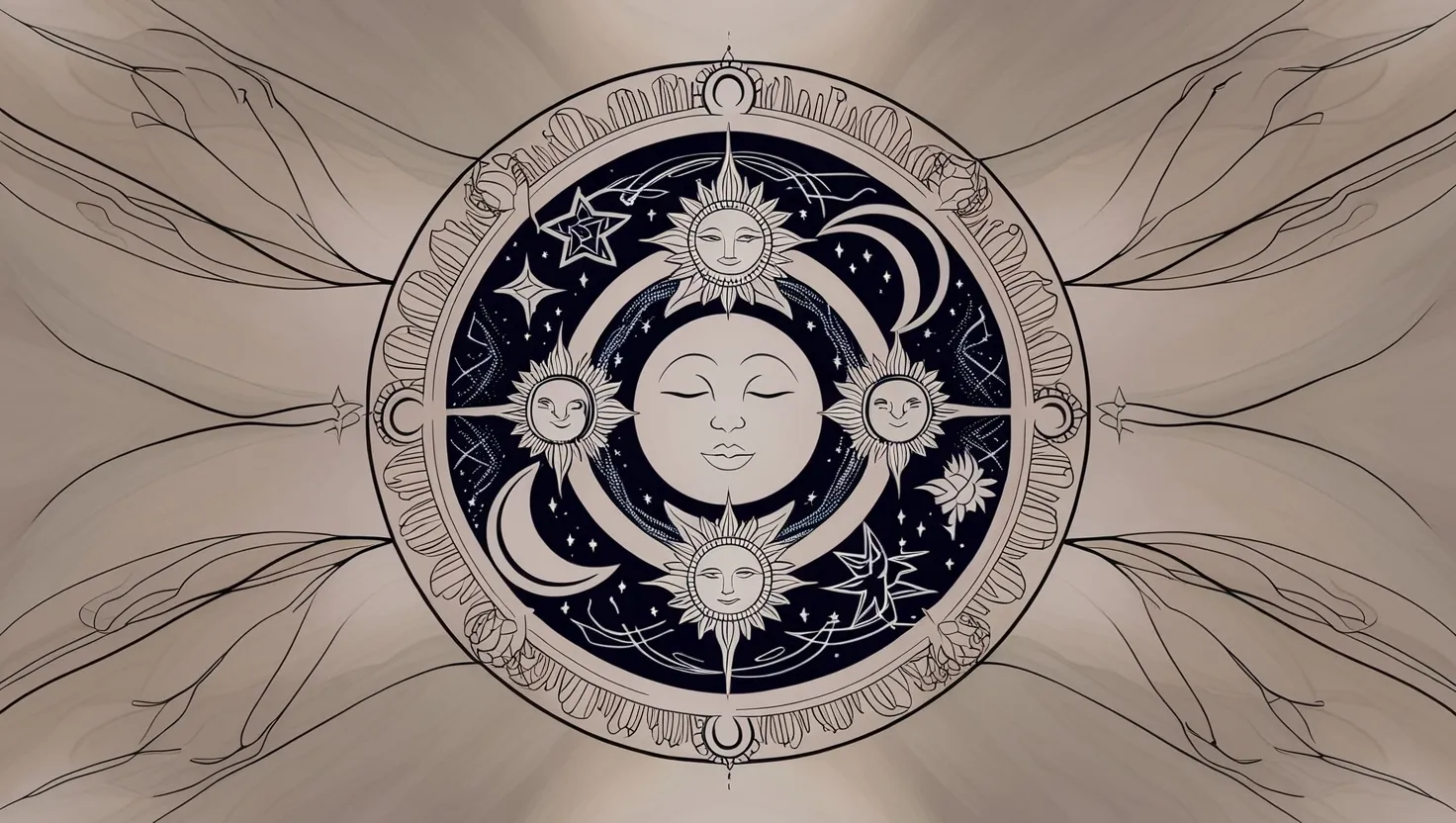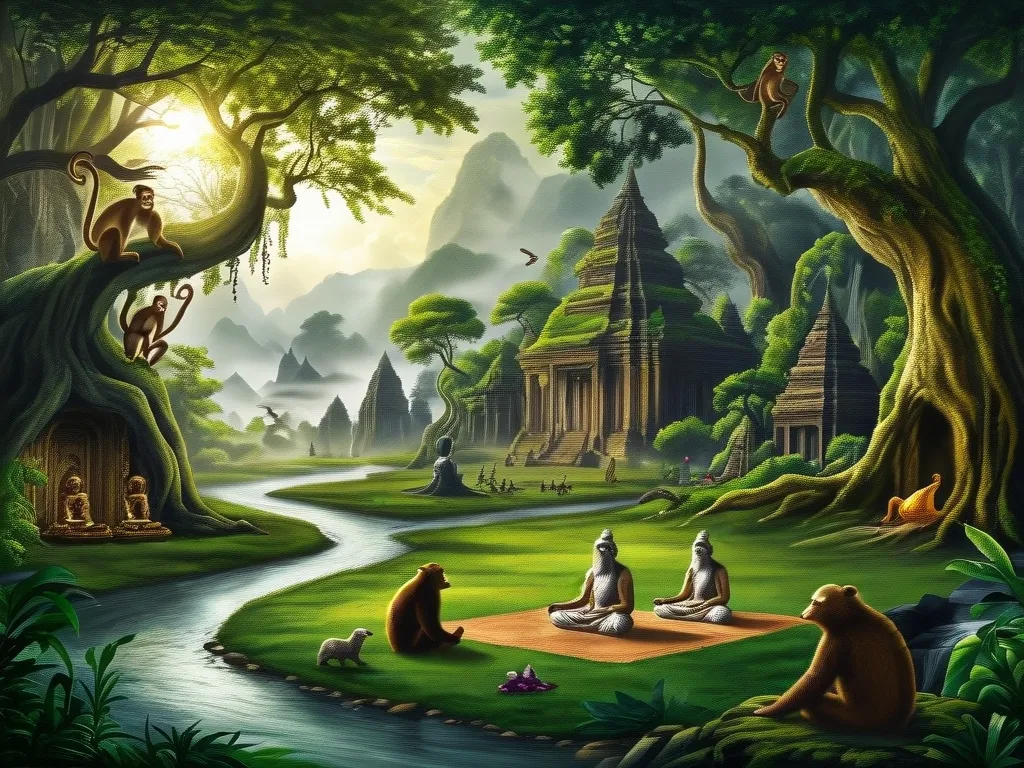In the vast and intricate landscape of Advaita Vedanta, there exists a concept that often slips beneath the radar of mainstream discussions, yet it holds the key to understanding the very fabric of our existence. This concept is known as Sphurana, a term that encapsulates the pulsation or throb of pure awareness, and it is here that we find a unique perspective on the dynamic nature of the Absolute.
To begin our journey into Sphurana, we must first grasp the foundational principles of Advaita Vedanta. This school of thought posits that the individual self, or jivatman, is not separate from the ultimate reality, Brahman. Instead, it is a reflection or limitation of this singular, unchanging consciousness manifesting in multiple bodies. The material world, according to Advaita Vedanta, is an illusory appearance, a manifestation of Brahman known as maya or vivarta[1].
Sphurana emerges as the initial spark or throb of self-awareness within this illusory world. It is the first ripple in the ocean of consciousness, marking the emergence of the ‘I’ thought. This concept is closely tied to the idea that our true nature is not the body or the mind, but the pure, self-luminous awareness that underlies all existence.
Imagine a still pond, its surface reflecting the sky above with perfect clarity. Now, envision a stone cast into this pond, creating ripples that disturb the calm surface. In a similar manner, Sphurana represents the first disturbance in the otherwise static field of consciousness, initiating the cycle of self-awareness and the subsequent illusion of a separate self.
This pulsation of awareness is not just a theoretical concept; it is a lived experience that can be accessed through deep meditation and introspection. Sri Ramana Maharshi, a renowned sage of the 20th century, often spoke about the importance of self-enquiry to reveal this true nature. He advocated for a simple yet profound question: “Who am I?” This inquiry is designed to peel away the layers of illusion, revealing the pure awareness that lies beneath[2].
In the context of Sphurana, this self-enquiry is not merely an intellectual exercise but a direct experience of one’s being. It involves recognizing that the world we perceive is not as solid as it seems. Memories, thoughts, and even our sense of continuity are all part of this illusory fabric. Sri Ramana Maharshi likened this to a dream, where even in the dream state, we experience memories and familiar places, yet it is all a creation of the mind[2].
The role of Sphurana in understanding the relationship between the individual self and the universal Self is pivotal. It suggests that the ‘I’ thought, which is the foundation of our individual identity, is not a fixed entity but a dynamic pulsation within the larger field of consciousness. This pulsation is what differentiates the static Absolute into the multifaceted world we experience.
To explore this further, consider the analogy of water in its various forms. Ice, water, and steam are all manifestations of the same substance, H2O, each with its unique characteristics yet fundamentally the same. Similarly, Sphurana represents the moment when the unified field of consciousness begins to manifest as diverse, individual selves, each with their own unique experiences and perceptions[4].
The practical wisdom derived from understanding Sphurana is profound. It guides us towards a path of self-realization that is not about achieving a distant goal but about recognizing our true nature in the present moment. This involves a process of disidentification from the body-mind complex and the notion of ‘doership,’ allowing us to see through the veil of maya and realize our identity as Atman-Brahman[1].
In this journey, meditation and introspection play crucial roles. The practice of svādhyāya, or the study of the self and Vedic texts, involves four stages: renunciation (virāga), listening to the teachings of the sages (sravana), reflection on these teachings (manana), and profound meditation (nididhyāsana) on key Upanishadic statements like “tat tvam asi” (that art thou)[1].
Sphurana, in this context, is the spark that ignites this process of self-discovery. It is the initial throb that sets the heart of the seeker beating in sync with the universal heartbeat. As one delves deeper into this pulsation, the misconceptions and false ego-identities rooted in maya begin to dissolve, revealing the ultimate truth of the oneness of Brahman.
For those on the spiritual path, understanding Sphurana offers a fresh perspective on meditation experiences. It is not just about sitting in stillness but about tuning into the subtle vibrations of consciousness. This tuning allows one to transcend the dualistic world and experience the unified dynamic nonlocal field of consciousness that underlies all existence[4].
In essence, Sphurana is more than just a concept; it is an invitation to explore the depths of our own consciousness. It reminds us that our true nature is not static but dynamic, pulsating with the rhythm of the universe. As we embark on this journey of self-discovery, we find that the distinctions between the individual self and the universal Self begin to blur, revealing a world where everything is interconnected and one.
This understanding is not merely theoretical; it is a lived experience that transforms our perception of reality. It teaches us to see the world not as a collection of independent objects but as a manifestation of the same underlying consciousness. This realization brings with it a sense of peace and unshakeable happiness, as we recognize that the cosmos we see around us is but a reflection of our own true nature.
As we delve into the mysteries of Sphurana, we are reminded that the path to self-realization is not about reaching a distant goal but about recognizing what has always been present. It is a journey that requires patience, dedication, and an open heart, but the rewards are immeasurable. For in the end, it is not about finding something new but about uncovering what has always been there, hidden beneath the surface of our everyday awareness.





